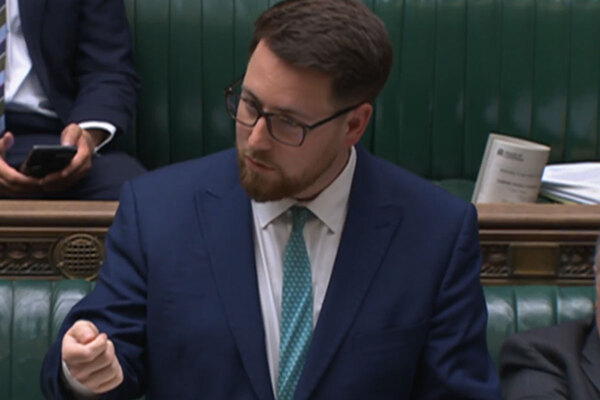You are viewing 1 of your 1 free articles
Back to the future: Part II
A decade ago government said tenants weren’t being listened to and pledged to overhaul regulation as a result. Following Grenfell the government made the same diagnosis. Martin Hilditch investigates what went wrong.
After 72 people lost their lives in the Grenfell Tower fire, the government admitted that for years the block’s residents had seen their concerns about health and safety “ignored or dismissed”.
Those were the words used by the then communities secretary Sajid Javid, in a speech to last year’s National Housing Federation conference, in which he added that “too many people in positions of power saw tenants less as people with families and more as problems that need to be managed”. The speech was used to announce government plans for a social housing green paper. Mr Javid added that conversations between the then housing minister Alok Sharma and social housing tenants revealed widespread demand for government to “look again at the way tenants are listened to and their concerns acted on”.
Those with long memories might be forgiven for feeling a little frustrated at Mr Javid’s diagnosis and call for action. Back in 2007 an independent review of social housing regulation criticised a “system in which tenants cannot switch [housing provider] and are put at risk of poor treatment”. One of the shortcomings identified in the report by regulation expert professor Martin Cave, was that the regulatory system of the time showed “inadequate concern for tenant interests”. There was “a strong case for regulation to protect tenants”, it concluded.
This makes the failures identified in the wake of Grenfell at least 10 years in the making. In order to understand what went wrong, Inside Housing spoke to some of the key players involved in regulation over this period. We wanted to understand why, a decade on from professor Cave’s review, Mr Javid was left having to reinvent it.
To get the full picture, there’s no better place to start than with professor Cave himself. His 2007 review suggested that the empowerment and protection of tenants should be one of just three principal objectives for the regulator.
Speaking today, professor Cave says this was the objective that “I personally though was the most important”.
“Tenants were potentially in a disadvantageous position” because a growing shortage of social housing meant they were unable to move if the quality of service they received from their landlords wasn’t high, he states.
“We did meet an awful lot of tenants,” he says. “It was clear that they were concerned about this as well.”
Professor Cave’s review recommended the creation of an independent regulator - in 2007, regulation was undertaken by the body that funded housing associations, the Housing Corporation. He also recommended an organisation called National Tenant Voice should be set up to “advocate for tenants in national debates and undertake dialogue with government, regulators and providers’ representative bodies”.
“I suppose by implication I thought that much was necessary because of the importance of the service and the imbalance of power between the provider and the consumer,” he states.
His review sparked major change, including the creation of a new regulator in December 2008, called the Tenant Services Authority (TSA).
“It was meant to be a regulator that had the rights of consumers at its heart,” recalls Peter Marsh, the chief executive of the TSA from its birth.
Mr Marsh says the regulator had the “noble aim” of creating an environment where the “voice of consumers could help landlords” improve their services.
Then on 3 July, 2009, six people died in Lakanal House after a fire spread quickly through the Camberwell high rise. In response, the TSA took steps to show it took fire safety seriously too, and would act to prevent future tragedies. Inside Housing campaigned for the creation of a national register of tower blocks following Lakanal. In November 2009, the TSA agreed, in principle, to create a register, which would contain information about, for example, whether blocks had up-to-date fire risk assessments. At the time, Phil Morgan, executive director of tenant services at the TSA, said it would be “a way of capturing [health and safety] issues and identifying whether there are things that need to happen”.
It was never to be. After the coalition government was formed following the 2010 General Election, new housing minister Grant Shapps told Inside Housing that the TSA was “toast”. Insisting that he placed a “huge premium” on tenant empowerment, he said he didn’t believe a “large national quango” was the best way to achieve this.
Far from improving things, however, in many eyes Mr Shapps’ approach was key to creating the problems that Mr Javid identified in 2017. In one swoop, Mr Shapps ended the active monitoring and regulation of consumer standards.
In his new world, the Housing Ombudsman would deal with individual service complaints, although the Localism Act 2011 made people jump through more hoops before they could get anywhere near the ombudsman.
At the same time, Mr Shapps also axed the National Tenant Voice, which was never really fully operational.
It is tricky to judge quite what a difference the TSA would have made. When Mr Shapps announced its days were numbered it had only finished consulting on its standards – and providers knew they weren’t going to last.
“A regulatory authority without the backing of government is a pretty weak animal,” Mr Marsh states.
“Organisations that didn’t believe” in accountability to tenants “no longer had to believe in it”, he adds.
While Mr Marsh is firm in explaining that “no-one can say if the particular circumstances around Grenfell could have been avoided” if a different system had been in place, he does gently refer back to the tower block register. “It is not unreasonable that there should be a degree of transparency and focus on the safety of those buildings,” he states. Although there has been much regulatory scrutiny of gas safety checks, “I don’t think the same degree of scrutiny has taken place on [fire] risk assessments,” he adds. The commitment to a register bit the dust with the TSA.
Mr Marsh also feels there was a “promise made and not delivered in relation to local authority tenants’ panels”. These panels, another brainchild of Mr Shapps, were meant to deal with tenant complaints at a local level after landlords’ internal processes had been exhausted – but before they could be referred to the housing ombudsman. “It just didn’t happen,” Mr Marsh states.
This is borne out by a visit to the Housing Ombudsman’s website. It is required to maintain a register of tenants’ panels, and there are just 91 on its database.
Michael Gelling, chair of the TAROE Trust, certainly thinks this is a major problem.
“The tenant panels don’t exist,” he states. “In some areas they haven’t existed ever.”
TAROE Trust was formed in 2013 out of the ashes of the former national tenant representative organisation, Tenants and Residents Organisations of England (TAROE), after it struggled to survive when its government grants were axed by the coalition.
Mr Gelling says that following the Cave review, with the formation of the TSA and the National Tenant Voice “tenants were at the heart of all discussions”. But "once that was reviewed by Mr Shapps there was less and less opportunity for tenants,” he states. While individual landlords have to take responsibility for their actions, he adds that “the main responsibility [for the worsening of tenants’ position] has to be that of government.”
It is a much tougher world now for tenants with valid complaints, he feels. He goes on to voice a frustration that chimes with the feelings of a number of tenants Inside Housing spoke to for this feature. “Why raise anything because no-one is listening to you anymore.”
Sharon Hayward, coordinator of the London Tenants Federation, says the complaints system is currently so dysfunctional that “I think people are giving up and getting frustrated.”
One person who has been directly involved in regulation since 2007 is Julian Ashby, who until he stepped down earlier this year chaired the regulation board of the Homes and Communities Agency. Mr Ashby was on the board of the TSA and helped draft professor Cave’s 2007 report.
“I certainly was among those who regretted the change [away from consumer regulation] at the time,” he states. While the HCA regulation committee, now known as the Regulator of Social Housing, does set consumer standards, it doesn’t proactively police them. It can only intervene when a failure to meet the standards has caused or could have cause serious harm or “detriment” to tenants. It’s an almost impossibly high threshold for intervention, and its tenant involvement and empowerment standard, for example, has never breached.
“The regulator’s role in relation to consumer regulation was heavily circumscribed by the serious detriment test,” Mr Ashby adds. “Parliament clearly intended it to be a fall back. But it isn’t something that it was very easy to either explain to people or follow through.”
This is a frustration to some. Tony Bird, an independent consultant who advises tenants, says: “I would call breaking promises in a transfer agreement substantial [detriment]. But no-one is interested.”
Mr Ashby says that the regulator did focus on health and safety cases – and has downgraded a number of providers over issues such as fire and gas safety in recent years.
He admits, though: “I think with hindsight we probably would have put more resources into that area. We could have been more aggressive in going looking for trouble rather than being reactive. But we felt constrained by the very clear direction of the legislation that stripped away our consumer role.”
Jonathan Walters, deputy director of strategy and performance at the Regulator of Social Housing, is a veteran of various English housing regulators – he was head of financial regulation for the Housing Corporation.
Mr Walters thinks it would be possible to prove a breach of the TIE standard if, say, a landlord failed to consult properly over a change of management. “I personally think it would be a very brave landlord that chose to move tenanted stock outside of the sector,” he states.
The big questions for the regulator though, arise out of Grenfell and Mr Javid’s admission that tenants are not being listened to effectively by some landlords.
When it comes to health and safety, Mr Walters says the regulator is using its in-depth assessments of landlords to ask boards how they are managing the risks highlighted by Grenfell.
He adds: “The second side of the question is, should tenants be listened to more? And if they had been would it have made a difference on that night? There is definitely a feeling they should be listened to more. The question for us is what is our remit in that? We are doing the role that parliament has given us at the moment.”
Ultimately, this is something Mr Walters feels the government will deal with in the forthcoming social housing green paper. “I think the question is about should the regulator be doing different things,” he states. “I think that does mean looking at the regulatory settlement for the sector at the moment.”
As for professor Cave? “I do suspect that the gap which we tried to fill with our proposals is still there,” he adds. “The sooner the government addresses a failure, if it agrees, the better.”







